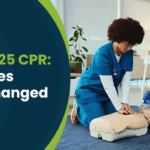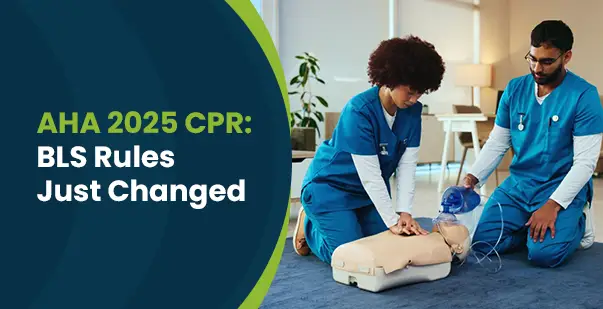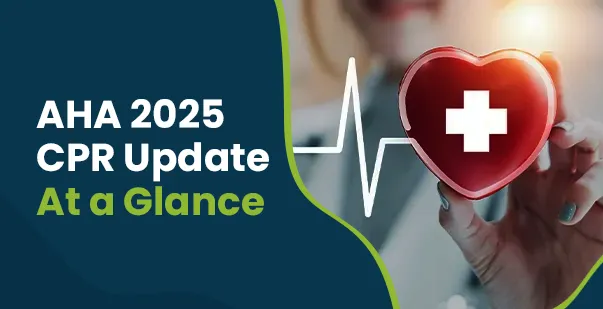The carotid pulse is a vital sign that provides the most significant information about the cardiovascular system. Recent research has shown that carotid pulse examination can help detect early signs of cardiovascular disease. A study found that abnormal patterns in this pulse were associated with a 30% increased risk of future cardiovascular events.
The carotid pulse is the pulsation felt in the neck caused by blood flow through the carotid arteries. These arteries supply oxygenated blood to the brain and are key indicators of heart function and overall cardiovascular health.
In this article, we will cover everything about carotid pulse in detail, including its anatomy, examination techniques, and clinical significance.
Anatomy of the Carotid Arteries
The carotid arteries in the neck are major blood vessels that supply oxygenated blood to the head and neck. Therefore, when you encounter any emergency, you should have a proper understanding of their anatomy to locate and assess the carotid pulse properly.
The carotid arterial system consists of the common carotid arteries, which branch into the internal and external carotid arteries. The common carotid artery begins at the aortic arch on the left side and the brachiocephalic trunk on the right side. As it ascends the neck, it bifurcates into the internal and external carotid arteries at the level of the fourth cervical vertebra, approximately at the upper border of the thyroid cartilage.
Where is Your Carotid Artery?
The carotid arteries in the neck are located on both sides. Specifically, they can be found in the area between the trachea (windpipe) and the sternocleidomastoid muscle, which is the large muscle that runs from behind the ear to the collarbone. The pulse is typically felt at the level of the cricoid cartilage, which is about midway up the neck.
Neck Carotid Artery Anatomy
The neck carotid artery, or common carotid artery, runs vertically through the neck before dividing into the internal and external carotid arteries. The internal carotid artery supplies blood to the brain, while the external carotid artery provides blood to the face, scalp, and neck structures. Key anatomical landmarks to determine where is your carotid artery are as follows:
- Origin: Left common carotid artery from the aortic arch, right common carotid artery from the brachiocephalic trunk.
- Course: Ascends the neck within the carotid sheath, alongside the internal jugular vein and vagus nerve.
- Bifurcation: Typically occurs at the level of the fourth cervical vertebra.
- Branches: Internal carotid artery (supplies the brain) and external carotid artery (supplies face and neck).
Carotid Pulse Location and Palpation Technique
Carotid pulsation is used to detect the pulse of an unconscious individual when a radial pulse can not be taken. Therefore, knowing the correct carotid pulse location and palpation technique is essential for accurate assessment.
Carotid Pulse Location
The carotid pulse is typically palpated in the neck, lateral to the trachea, and medial to the sternocleidomastoid muscle. The most reliable location is at the level of the cricoid cartilage, which is the ring-like cartilage of the larynx, located about midway up the neck. To find the carotid pulse:
- Ask the patient to sit upright or lie at a 30-45-degree angle.
- Locate the cricoid cartilage in the midline of the neck.
- Move your fingers laterally from the cricoid cartilage between the trachea and the anterior border of the sternocleidomastoid muscle.
- Gently press your fingers into this area to feel the pulsation of the carotid artery.
- Apply light pressure when palpating the carotid pulse. Pressing too hard may occlude the artery, which could lead to dizziness or reduced blood flow, especially in elderly patients.
Carotid Pulsation Location
The carotid pulsation can be felt most prominently in the area described above. However, it’s important to note that the pulsation may be more or less noticeable depending on factors such as the patient’s body habitus, age, and cardiovascular health. When palpating and identifying the correct carotid pulsation location, keep these points in mind:
- Use the pads of your index and middle fingers, not your thumb (to avoid confusing the patient’s pulse with your own).
- Apply gentle pressure – excessive pressure can stimulate the carotid sinus and cause a reflex slowing of the heart rate.
- Never palpate both carotid arteries simultaneously, as this can compromise blood flow to the brain.
- Palpate for at least 30 seconds to assess the rate, rhythm, and quality of the pulse. For example, you may encounter a regular or irregular rhythm or find the pulse to be weak (suggesting low blood flow) or bounding (indicating a high stroke volume or pressure).
Learn CPR. Save Lives. Get Certified Online.
Master essential CPR techniques and get certified today.
Characteristics of a Normal Carotid Pulse
Understanding the normal characteristics of the carotid pulse is important for identifying any abnormalities during a medical assessment. The carotid pulse can be felt on either side of the neck and provides vital information about heart function.
- Rate: Typically between 60-100 beats per minute in adults at rest
- Rhythm: Regular and consistent
- Volume: Easily palpable but not bounding
When checking the carotid pulse, you should feel a strong but steady beat with a rapid rise and a slower decline. The peak of the pulse should be brief but noticeable, giving an overall sensation of a well-regulated heartbeat. However, certain factors affect the carotid pulse in healthy individuals, which are as follows:
- Age: Pulse may become less forceful in older adults due to decreased arterial elasticity.
- Body Position: Pulse may be more pronounced when lying down compared to standing.
- Physical Activity: Recent exercise can increase pulse rate and force.
- Emotional State: Stress or anxiety can lead to a faster, more forceful pulse.
- Medications: Certain drugs like beta-blockers or sedatives can lower pulse rate, while stimulants may increase it.
- Hydration Status: Dehydration may reduce blood volume and can lead to a weaker pulse. On the other hand, proper hydration helps maintain normal pulse quality.
- Temperature: Cold temperatures can cause vasoconstriction, resulting in a weaker pulse, while heat causes vasodilation, which makes the pulse feel more forceful.
- Respiratory Cycle: The pulse may fluctuate with breathing. It can often become slightly stronger on inhalation and weaker on exhalation.
- Hormonal Fluctuations: Conditions like hyperthyroidism can lead to an elevated pulse, while hypothyroidism can slow it down.
Keep in mind that “normal” pulse characteristics can vary slightly from person to person. Regular assessments and knowing a patient’s typical pulse can help detect any significant changes or issues.
Abnormal Carotid Pulse Patterns
Recognizing abnormal carotid pulse patterns is a crucial skill for healthcare providers. Various cardiovascular conditions can alter the characteristics of this pulse, providing valuable diagnostic clues. Here are some common abnormal pulse patterns:
- Hyperkinetic Pulse
A hyperkinetic or bounding pulse is characterized by a rapid upstroke, increased amplitude, and quick downstroke, giving it a “jumpy” sensation under the fingers. It is often associated with conditions like aortic regurgitation, fever, anemia, thyrotoxicosis, anxiety, and beta-agonist medications.
In severe cases of aortic regurgitation, it can be accompanied by a “water-hammer” pulse (also called Corrigan’s pulse), where the pulse feels forceful and then collapses rapidly. Other physical signs may include a wide pulse pressure and visible pulsations in peripheral arteries like the carotids.
- Hypokinetic Pulse
A hypokinetic pulse is weak and difficult to palpate. It has a slow upstroke and decreased amplitude. Conditions associated with a hypokinetic pulse include hypovolemia (low blood volume), cardiogenic shock, severe heart failure, pulmonary embolism, cardiac tamponade and aortic stenosis (in advanced stages).
- Pulsus Bisferiens
Pulsus bisferiens, or bifid pulse, is characterized by two distinct peaks during systole, creating a “double bump” sensation. This pulse pattern is often seen in combined aortic stenosis and regurgitation and Hypertrophic cardiomyopathy.
- Pulsus Parvus et Tardus
A slow-rising, low-amplitude pulse characterizes Pulsus Parvus et Tardus. “Parvus” refers to the small amplitude, while “tardus” describes the delayed peak. Pulsus parvus et tardus is classically associated with severe aortic stenosis.
- Pulsus alternans
Pulsus alternans is a beat-to-beat variation in pulse amplitude, where strong beats alternate with weak beats. This pattern is typically seen in severe left ventricular systolic dysfunction and advanced heart failure.
- Pulsus paradoxus
Pulsus paradoxes are medical signs characterized by an exaggerated drop in systolic blood pressure greater than 10 mmHg during inspiration. While primarily a blood pressure phenomenon, it can sometimes be felt as an abnormality in the carotid pulse, particularly in severe cases.
During inspiration, the pulse amplitude decreases significantly. This finding is especially important in conditions like cardiac tamponade, severe asthma or COPD exacerbations, and constrictive pericarditis. In these situations, the drop in systolic pressure is due to changes in intrathoracic pressure affecting venous return and cardiac filling.
Clinical Significance of Carotid Pulse Assessment
Carotid pulse assessment is a fundamental component of the cardiovascular examination. It offers valuable insights into a patient’s hemodynamic status and potential underlying conditions. This section will explore the clinical importance of carotid pulse evaluation. The pulse examination provides information about the following:
- Heart rate and rhythm
- Left ventricular function
- Aortic valve function
- Systemic vascular resistance
Detect Arrhythmias
Irregular pulse rhythms may indicate various arrhythmias, such as atrial fibrillation or premature beats. The carotid pulse is particularly useful for this assessment because it’s less susceptible to peripheral factors that can affect more distal pulses.
Evaluate Cardiac Output
The strength and character of the carotid pulse can provide clues about cardiac output. A bounding pulse might suggest high output states, while a weak pulse could indicate compromised cardiac function or hypovolemia.
Identify Valvular Heart Disease
Certain pulse characteristics are associated with specific valvular conditions, such as:
- A rapid upstroke with quick collapse (water-hammer pulse) suggests aortic regurgitation.
- A slow-rising, low-amplitude pulse (pulsus parvus et tardus) is characteristic of aortic stenosis.
- A bifid pulse may indicate combined aortic stenosis and regurgitation.
Assess for Carotid Artery Disease
While primarily used to evaluate cardiac function, carotid pulse examination can also detect abnormalities in the carotid arteries themselves. A diminished or absent pulse on one side may suggest carotid artery stenosis or occlusion.
Guide Further Diagnostic Testing
Abnormalities detected during carotid pulse assessment often prompt further investigation. For example:
- An irregular rhythm might lead to an ECG or Holter monitor.
- A murmur heard during auscultation combined with an abnormal pulse might indicate the need for an echocardiogram.
- Asymmetry in pulses could necessitate carotid Doppler studies.
Monitor Treatment Response
Changes in the carotid pulse characteristics can provide information about treatment efficacy or disease progression in patients with known cardiovascular conditions.
While the pulse assessment is a valuable clinical tool, it’s important to remember that it should always be interpreted in the context of the patient’s overall clinical picture, including other physical examination findings and diagnostic tests.
Carotid Pulse in Emergency Situations
Assessing the carotid pulse is essential during emergencies, especially in cases of cardiac arrest or shock. It’s important for lay responders to know how to quickly and accurately check the pulse to help save lives. In critical situations, checking the carotid pulse is crucial for:
Confirming Cardiac Arrest
In suspected cardiac arrest, checking for a carotid pulse is a key step in determining whether to initiate cardiopulmonary resuscitation (CPR). Current guidelines recommend:
- Check for responsiveness,
- Call for help and get an AED (Automated External Defibrillator),
- Check for breathing (look for chest rise, listen for breath sounds, feel for air from the nose or mouth),
- If not breathing normally, check the carotid pulse for no more than 10 seconds.
If no pulse is detected within 10 seconds, CPR should be initiated immediately.
Assessing Circulatory Status in Shock
In patients with suspected shock, the carotid pulse can provide valuable information about the severity of circulatory compromise. In a shock state, the pulse may become weak and thready, and tachycardia is common. In severe cases, the pulse may be the only palpable pulse. Therefore, regular reassessment of the pulse can help monitor a patient’s response to resuscitation efforts.
Differentiating Syncope from Seizure
In a patient who has lost consciousness, the presence and quality of the carotid pulse can help differentiate between syncope (fainting) and seizure:
- In syncope, the pulse may be weak initially but should normalize quickly.
- During a seizure, the pulse is typically normal or elevated.
Carotid Pulse As Your Key to Detecting Abnormalities!
The carotid pulse serves as a vital window into cardiovascular health, offering invaluable insights for both routine examinations and emergencies. From its anatomical foundations to its diverse clinical applications, understanding the pulse is key for healthcare providers across various specialities.
As medical knowledge advances, the importance of this fundamental clinical skill remains unchanged. The carotid pulse continues to be a quick, noninvasive, and informative tool for assessing cardiovascular health. Thus, as more people are trained in basic life support, more lives will be saved during emergencies.
Get Certified with Our Online CPR Certification Course?
Learn CPR skills that make a real difference.
Additional Read –









